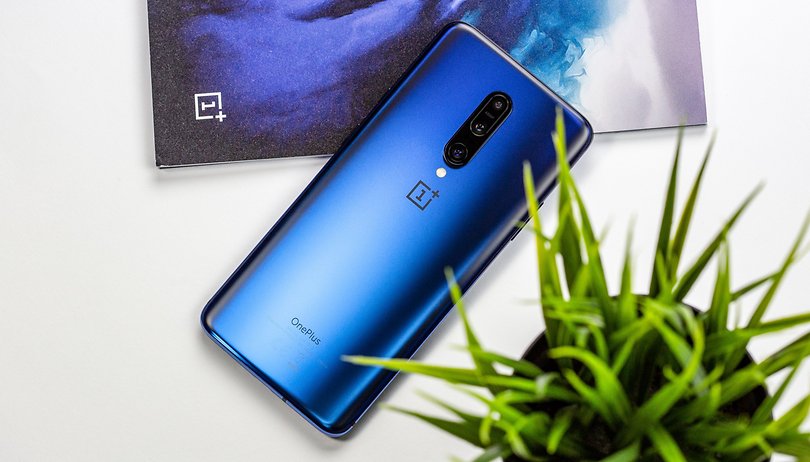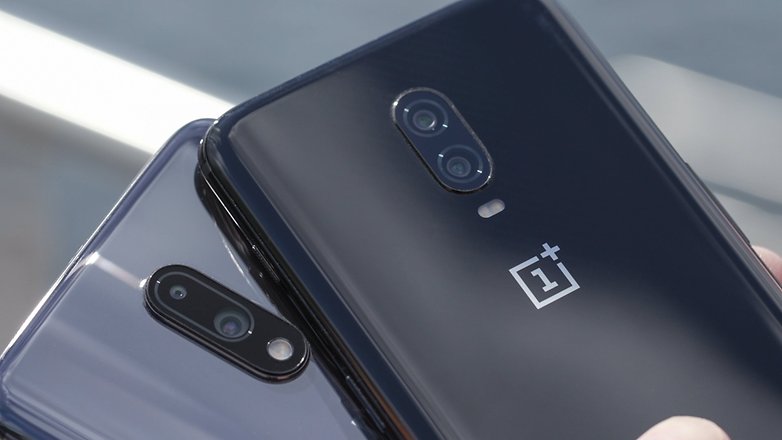What's the difference between the OnePlus 7 and the OnePlus 7 Pro?

This year, OnePlus presented two models simultaneously for the first time: The normal OnePlus 7 and a larger version, the OnePlus 7 Pro. There are differences, especially when it comes to the camera. We'll show you the key differentials between the two OnePlus smartphones.
For many manufacturers, it is now perfectly normal to present different variants of the current flagship. Usually, there's a normal one, a larger one and then a slimmed down, cheaper smartphone as part of the same product line. OnePlus, on the other hand, has always released two phones per year: a new flagship in the spring, followed by an updated T-version of this device in the autumn. But in 2019, OnePlus is doing it differently - for the first time, there is the OnePlus 7 Pro in addition to the OnePlus 7.
Jumps directly to the section:
- Design: old and new
- Display: faster with Pro
- Technical specs
- Camera: more lenses with Pro
- Performance: equal power
- Availability: the Pro has priority
Design: both old and new
Anyone holding the OnePlus 7 in their hands will notice that it looks suspiciously similar to the OnePlus 6T. The new smartphone also features a drop-shaped notch in which the front-facing camera sits. The speaker at the upper end is slightly larger than on the old model.
The situation is different with the OnePlus 7 Pro. The rounded 6.67-inch display, with a resolution of 3,120 x 1,440 pixels, is almost bezel-less. There's no notch here. Instead, OnePlus relies on a pop-up camera that automatically extends out when the selfie camera is activated in the camera app.

Display: faster with Pro
Not only is the above-mentioned display larger on the OnePlus 7 Pro, it also offers a higher refresh rate than the OnePlus 7. The latter, like most smartphone panels, offers a refresh rate of 60 Hz. It has a Full HD+ resolution, i.e. 2,340 x 1,080 pixels.
The Pro version, on the other hand, has a frame rate of 90 Hz. This has been largely exclusive to gaming smartphones until now. However, not all games themselves are optimized for 90 Hz. In addition, the display is optimized for HDR10+. For films and TV shows, this improves color rendering and contrast range.
Technical data
| OnePlus 7 | OnePlus 7 Pro | |
|---|---|---|
| Display | 6.41 inch 2,340 x 1,080 pixels, 60Hz, notch |
6.67 inch 3,120 x 1,440 pixels, no notch |
| SoC | Qualcomm Snapdragon 855, Adreno 640 GPU | |
| RAM | 6 GB, 8 GB | 6 GB, 8 GB, 12 GB |
| Storage | 128 GB, 256 GB | |
| Cameras | 16 Megapixel (front) 48 megapixels + 5 megapixels |
16 Megapixel (front) 48 megapixels + 8 megapixels (zoom) + 16 megapixels (ultra-wide-angle) |
| Battery | 3,700 mAh | 4,000 mAh |
| Price | starting £499 / $n/a | starting £649 / $669 |
Camera: more lenses with the Pro
Of course, the camera on the Pro model is also better equipped. But, both models use the Sony IMX586 with 48 megapixels as the main camera (f/1.6). Sony uses small but plentiful pixels for this sensor. Pixel binning allows the sensor to combine four pixels into one to capture more information and minimize image noise. This should also lead to better photos in poor lighting conditions. Due to the combined pixels, the effective resolution of these images is 12 megapixels.

The OnePlus 7 comes with a second camera with 5 megapixels. It collects depth of field information and is thus responsible for the bokeh effect. The Pro version is missing that camera. The second camera is an 8-megapixel sensor (f/2.4) with a telephoto lens for 3x optical zoom.
Behind the third camera is a 16 megapixel (f/2.2) sensor bundled with an ultra-wide angle lens that can capture 117 degrees of view. Video enthusiasts can also use the OnePlus 7 Pro camera to capture 4K video at 60 FPS. Both models have a double LED flash.
With the front camera, however, there are no differences. The Sony IMX471, which offers a resolution of 16 megapixels, is included in both smartphone variants. The camera records video at 1080p at 30 frames per second.
Performance: no difference in power
If you don't go for the OnePlus 7 Pro, you won't have to cut back on performance. As expected, the manufacturer has installed Qualcomm's current processor, the Snapdragon 855. You can choose between 6/128 GB or 8/256 GB options - the Pro has an additional combination of 12/256 GB.
OnePlus also incorporates fast UFS 3.0 memory in both smartphones. If you choose the simple OnePlus 7, you at least don't have to sacrifice performance.
The battery, on the other hand, is different again. It is 3,700 mAh in the OnePlus 7 and comes with fast-charge technology. The Pro, in contrast, not only has a 4,000 mAh battery but also supports Warp Charge 30, which is also found in the OnePlus 6T McLaren.
Both smartphones run OxygenOS based on Android 9 Pie. The fingerprint sensor integrated into the display is also the same on both phones.
Availability: the Pro has priority
The OnePlus 7 Pro is the first launched on the market. It will be available from 21 May. The regular OnePlus 7, on the other hand, will not be available until June and won't reach the US market.
The OnePlus 7 Pro starts at a price of $669 for 6 GB/128 GB. The variant with 8 GB of RAM and 256 GB or storage costs $699. The top-end version with 12 GB RAM costs $749.




love ones